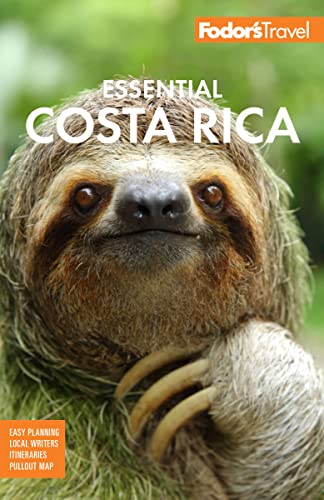Tortuguero National Park
At various times of the year, four species of sea turtle—green, hawksbill, loggerhead, and giant leatherback—lumber up the 35 km (22 miles) of beach to deposit their eggs for safekeeping. This is the best place in Costa Rica to observe these magnificent creatures' nesting and hatching rituals.
In 1975 the Costa Rican government established Tortuguero National Park to protect the sea turtle population, which had been decimated after centuries of being hunted for its eggs and shells. Still, despite preservation efforts, fewer than 1% of the hatchlings will make it to adulthood.
Turtles may be the top draw here, but keep your eyes peeled for other species: tapirs, jaguars, anteaters, ocelots, howler monkeys, capuchin monkeys, three-toed sloths, collared and white-lipped peccaries, coatis, and blue morpho butterflies also populate the park. You can wander the beach when the turtles aren't nesting, but riptides make swimming dangerous, and shark rumors persist.
Best Time to Go
The green turtle's July-through-October nesting season is the most popular time to visit. It rains here (a lot!) year-round, so expect to get wet no matter when you go. February through April is a tad drier.
Fun Fact
One of nature's mysteries is how turtles find their way back to the same beach where they hatched. It's thought that the sand leaves a biological imprint on the turtle hatchlings during their scurry to the sea.
Best Way to Explore
Bird-Watching and Wildlife
This is a birder's dream destination. Some of the rarer species you'll find here include the snowy cotinga, palm warbler, and yellow-tailed oriole. Waterbirds and herons abound. On a recent foray, members of the Birding Club of Costa Rica were treated to a close-up view of a wide-eyed rufescent tiger-heron chick sitting in his nest, squawking impatiently for food. You'll also see iguanas, caimans, and sloths. Bird-watching and wildlife spotting sometimes collide: while watching two beautiful agami herons feeding on a muddy bank, birders were shaken up by the sudden splash of a crocodile attacking the herons. Happily, the herons were quicker off the mark than the birders were!
Boat Rides
It's not quite The African Queen, but a boat ride along the narrow vine-draped canals here is close. Once you're off the main canal, the specially designed, narrow tour boats glide relatively quietly (using mandated electric motors) and slowly, which makes for better wildlife spotting and fewer waves that erode the lagoon banks. Another alternative is to rent a kayak and go at your own speed along the canals.
Tours
Most visitors opt for a fully escorted tour with one of the big lodges, because you're looked after from the moment you're picked up at your San José hotel until you're dropped off a day or two or seven later. All include a couple of standard tours of the park in their package prices. It's entirely possible to stay at a smaller in-town place and make à la carte arrangements yourself.
Top Reasons to Go
Luxury in the Jungle
Don't let tales of Tortuguero's isolation dissuade you from making a trip. No question: the place is remote. But the lodges up here package everything (overnight lodging, meals, tours, and, best of all, guided round-trip transportation) into one price, in true "leave the driving to them" fashion. You won't lift a finger.
Plane or Boat Only
Whoever coined the old adage "Getting there is half the fun" might have had Tortuguero in mind. Plane and boat are the only ways to get to this no-road sector of Costa Rica. If you have the time, the fully escorted boat trips to and from the jungle give you a real Indiana Jones experience.
Turtles
Tortuguero takes its name from the Spanish word for turtle (tortuga), and here you'll get the chance to observe the nesting and hatching of four species of sea turtle.




